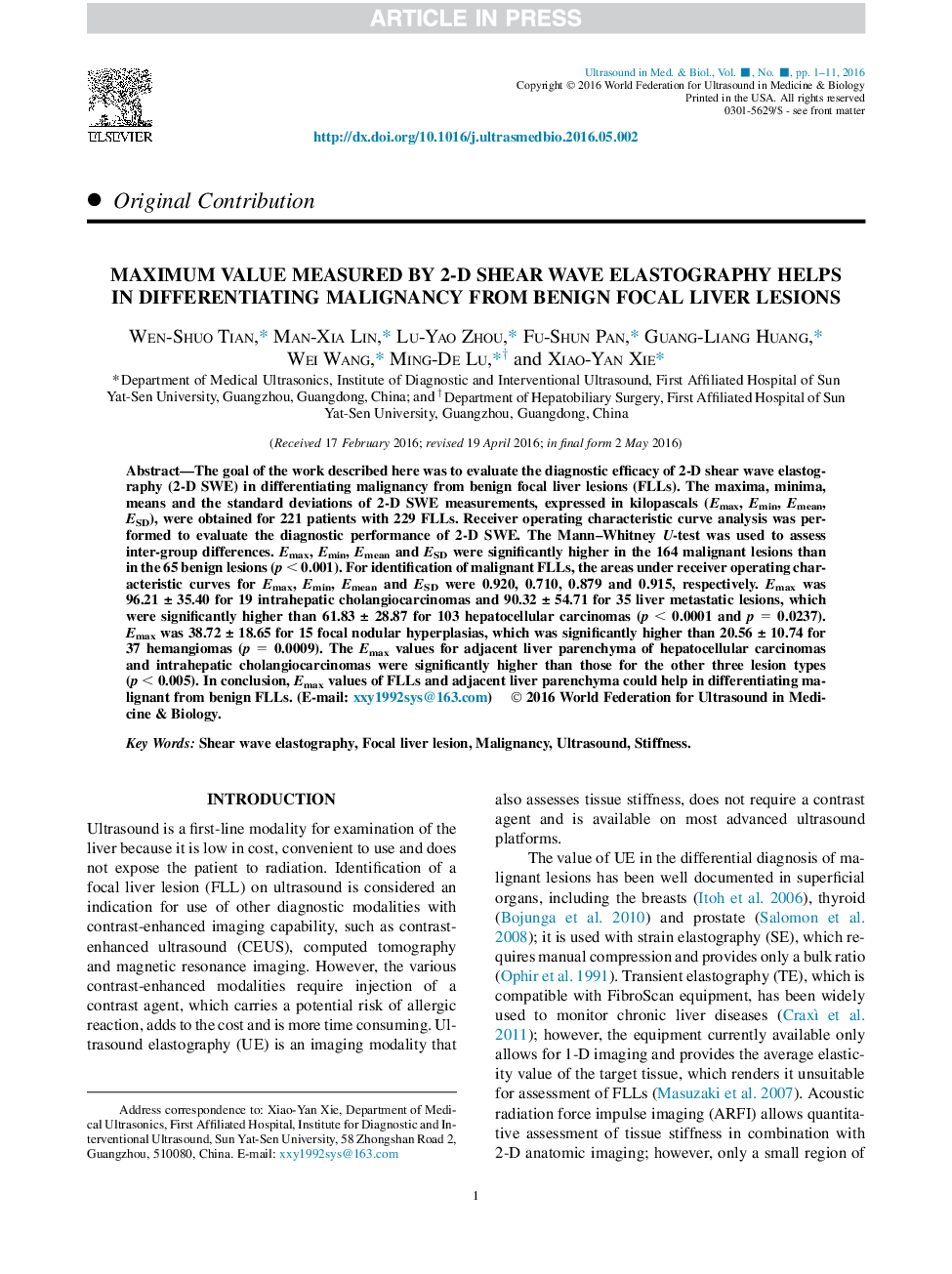| Article ID | Journal | Published Year | Pages | File Type |
|---|---|---|---|---|
| 10691050 | Ultrasound in Medicine & Biology | 2016 | 11 Pages |
Abstract
The goal of the work described here was to evaluate the diagnostic efficacy of 2-D shear wave elastography (2-D SWE) in differentiating malignancy from benign focal liver lesions (FLLs). The maxima, minima, means and the standard deviations of 2-D SWE measurements, expressed in kilopascals (Emax, Emin, Emean, ESD), were obtained for 221 patients with 229 FLLs. Receiver operating characteristic curve analysis was performed to evaluate the diagnostic performance of 2-D SWE. The Mann-Whitney U-test was used to assess inter-group differences. Emax, Emin, Emean and ESD were significantly higher in the 164 malignant lesions than in the 65 benign lesions (p < 0.001). For identification of malignant FLLs, the areas under receiver operating characteristic curves for Emax, Emin, Emean and ESD were 0.920, 0.710, 0.879 and 0.915, respectively. Emax was 96.21 ± 35.40 for 19 intrahepatic cholangiocarcinomas and 90.32 ± 54.71 for 35 liver metastatic lesions, which were significantly higher than 61.83 ± 28.87 for 103 hepatocellular carcinomas (p < 0.0001 and p = 0.0237). Emax was 38.72 ± 18.65 for 15 focal nodular hyperplasias, which was significantly higher than 20.56 ± 10.74 for 37 hemangiomas (p = 0.0009). The Emax values for adjacent liver parenchyma of hepatocellular carcinomas and intrahepatic cholangiocarcinomas were significantly higher than those for the other three lesion types (p < 0.005). In conclusion, Emax values of FLLs and adjacent liver parenchyma could help in differentiating malignant from benign FLLs.
Related Topics
Physical Sciences and Engineering
Physics and Astronomy
Acoustics and Ultrasonics
Authors
Wen-Shuo Tian, Man-Xia Lin, Lu-Yao Zhou, Fu-Shun Pan, Guang-Liang Huang, Wei Wang, Ming-De Lu, Xiao-Yan Xie,
